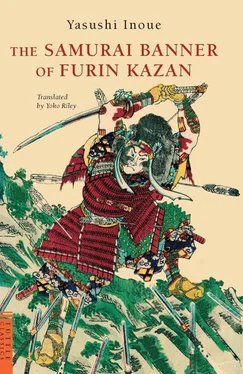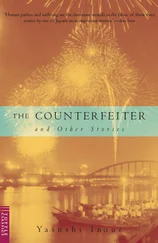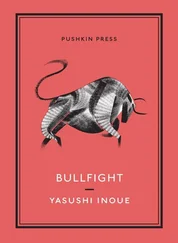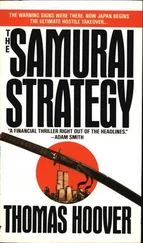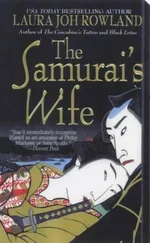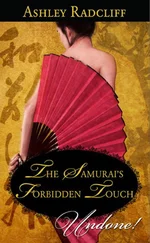From around that time, the appearance of the field started to change. The sun vanished behind the clouds, and in the southwest sky, black rain clouds started to gather.
TAKEDA SHINGEN’S ARMIES sustained approximately 4,600 fatalities and 7,500 injuries, whereas Uesugi Kenshin’s troops sustained 3,500 dead and 9,400 injured. Uesugi Kenshin withdrew from the battlefield.
According to the records of Takeda sandai ki, three generations of the Takeda family history, Yamamoto Kansuke attacked the enemy head on and is believed to have killed thirteen opposing warriors before succumbing — this at the age of 69.
Takeda Shingen, who dreamed of the unification of Japan, died due to illness in Shinano district in 1573 without achieving his dream. For the warlord whose passion was to fight until his death in the battlefield, his death from illness must have been hard to accept.
Takeda Shingen’s legitimate son, Takeda Yoshinobu, survived the battle of Kawanakajima. The emnity between Yoshinobu and Katsuyori was well known, particularly due to Takeda Shingen’s obvious preference toward Princess Yuu’s son, Katsuyori. The real truth is unknown, but it is believed that Takeda Shingen put Yoshinobu in prison, when his secret attempt at treachery was discovered. One theory says that he died in prison at the age of thirty, whereas another suggests that he died from illness.
Takeda Shingen’s illegitimate son, Takeda Katsuyori, assumed leadership after his father’s death. In spite of his dream to be a better daimyo than his father, Katsuyori eventually faced his fate to fight against the two strongest unifiers of Japan, Oda Nobunaga and Tokugawa Ieyasu.
Betrayed by his own vassal while facing Oda’s army, Takeda Katsuyori killed himself, slitting his abdomen in the style of the cross along with his wife and sixteen-year-old son, thus bringing to an end the Takeda Clan of the warring era.
The unification of Japan was not to be complete for several decades. In 1560, Oda Nobunaga defeated the Imagawa at the battle of Okehazama. Unification was then pursued for many years through the efforts of Toyotomo Hideyoshi and consummated, in 1600, by Tokugawa Ieyasu, who established the Tokugawa Shogunate which lasted for close to 300 years until the opening of Japan and modernization in 1868.
— Yoko Riley
1. Warlord.
2. The way of the samurai; unwritten code of conduct for the samurai such as loyalty and obligation between lord and vassal, self-discipline such as self-denial, self-control, the way of handling swords, etc.
3. Masterless samurai. A samurai who has either lost his lord in battle or left his master.
4. The capital city of the province of Suruga where the Imagawa Clan was situated.
5. Samurai: A member of the class or warriors of feudal Japan who served their territorial lord according to the code of Bushido, representing loyalty, honor, and self-sacrifice, among other values.
6. A wooden sword used in practice and in tournaments.
7. Empress tree.
8. The name of the Imagawa family’s fiefdom or domain.
9. Name of the era from 1533 to 1553.
10. The province of the Takeda Clan.
11. Nettle tree.
12. Lord of the fiefdom.
13. Takeda Harunobu, or Takeda Shingen, held different values from his father, Takeda Nobutora. Whereas Nobutora had, under feudal tradition, cruelly taxed and exploited the poor, Shingen was well read and sympathetic to the weak and the peasants.
Shingen was supported by his father’s samurai and successfully overthrew and exiled his father to the Imagawa’s fiefdom when he was only twenty-one years of age.
14. A long sword.
15. Denomination of currency. 1 kan = 1,000 mon.
16. Zelkova tree or American elm: a large deciduous tree imported to the U.S. from Japan.
17. Fumadai: Japanese houses, in those days, had one step up from the ground before stepping on the floor of the house.
18. —san is a polite suffix to a person’s name in Japanese, equivalent to Mr. or Mrs. or Ms. For example, Mr. Iohara is really addressed as Iohara-san in Japan. — san is the same for men and women. Use of somebody else’s first name is uncommon and overly familiar in Japan, unless you now that person well. You do not use — san when referring to yourself, just as you do not use Mr., Mrs., or Ms.
19. Later called Takeda Shingen.
20. Capital city of the province of Kai where the Takeda Clan was situated.
21. Imagawa Yoshimoto (1519–1560), a warlord in central Japan.
22. The southwest island, one of the four major islands of Japan.
23. The southern district of Honshu island, the larges island of Japan.
24. The southern most island, one of the four major islands of Japan.
25. One of Suwa Yorishige’s castles near Lake Suwa.
26. Japanese rice wine.
27. Zen-influence drama in slow and symbolic form.
28. Japanese samurai carried two swords, one long and one short.
The short sword was called a wakizashi during the Muromachi Period (1333–1573) and later also was called the shoto.
29. A method of suicide, consisting of disembowelment with a sword. It was originally reserved to men of samurai rank in disgrace or condemned to death, but subsequently became an honorable and, in some cases, required form of suicide. Also known in the West as hara-kiri.
30. It was common for the children of a warlord to commit seppuku when their father was killed.
31. Sanskrit word meaning Titan.
32. Eight o’clock in the morning. See the chart on page 209 for all the Japanese hours of the day.
33. The origin of Suwa. The Suwa shrine deifies the god of war.
34. Fourteen characters are selected from Sun Zsu’s Art of War written in two lines.
35. One of the war deities of the Japanese indigenous religion, Shinto.
36. The flag’s content is taken from the Art of War by Sun Zsu, Sonshi is a Japanese pronunciation of Sun Zsu.
37. This was taken from the Art of War by Sun Zsu, a shorter description of this is Furin Kazan and was used in the title of this book.
38. Denomination of gold: one kan is about 8.3 pounds of gold.
Takeda Harunobu frequently gave several handfuls of gold to samurai who made a great contribution to a particular battle.
39. Takeda Shiro Katsuyori, better known as Katsuyori. Shiro means the fourth male child.
40. This name means the third male child.
41. Eastern central provinces.
42. Mountain ash.
43. The god of war, a protective god of Buddhism.
44. The god of fire, a protective god of Buddhism. Fudomyoou in Japanese.
45. A compact formation.
46. A Japanese blue flower which blossoms on a tree.
47. Protective diety of the Suwa district.
48. Zen-influenced traditional and graceful dance form.
49. Later called Uesugi Kenshin.
50. Kawanakajima is situated between the fork of the Chikuma River and the Sai River in Nagano Prefecture.
51. Noon. According to the actual hours of the day, the hour of the Bull is 2 a.m.; however, the author specifically indicated noon in parentheses.
52. Original text by the author is written Oyamada, this could be a mistake of Yokota Takatoshi.
53. A baton with a fluffly moplike fabric on one end. It was used to direct a large army.
54. The flag carriers who ride horses flat to the horse’s neck like a centipede. In Japanese writing centipede is written as one hundred legs.
55. 2.286 acres of land.
56. Japanese grass similar to, but shorter than, pampas grass. The plant often represents fall in traditional Japanese poetry.
Officially called Japanese silver grass or Mascanthus sinensis.
57. A term used to call an old man who has served the family for a long time.
Читать дальше
